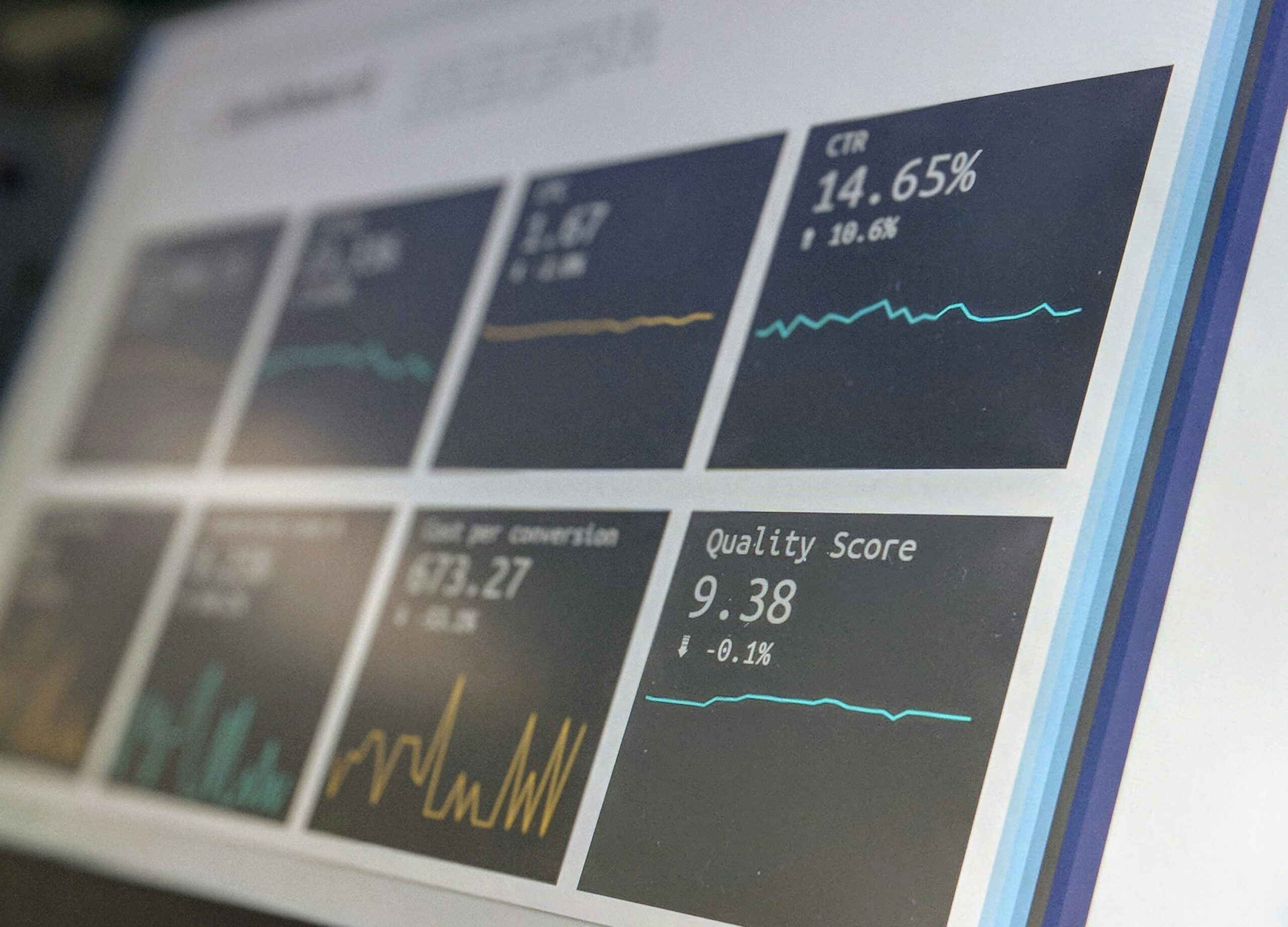The modern business landscape demands a laser-sharp focus on customer acquisition that not only brings in new prospects but also delivers a satisfactory return on investment (ROI) over time. Companies worldwide refine their strategies by leveraging traditional channels, digital tools, and data-driven insights to capture an increasingly discerning audience’s attention. At the core of these strategies lies the critical balance of understanding the target market and deploying the right tactics to attract and nurture leads. This article explores comprehensive methods for maximizing ROI in customer acquisition. It offers practical insights for thought leaders, consultants, and service providers who aim to automate marketing pipelines and build long-term trust with their audiences.
Key Takeaways
- Defining your ideal customer profile and setting performance indicators are critical for maximizing acquisition ROI.
- Digital channels such as SEO, PPC, and email marketing must be optimized for cost-effective customer engagement.
- Enhancing conversion rates requires robust landing page design, personalization, and rigorous A/B testing.
- Data analysis and continuous measurement are essential to adjust strategies and effectively scale acquisition efforts.
- Integrating customer retention strategies can further amplify marketing ROI by fostering loyalty.
Foundational Approaches for Maximizing ROI in Customer Acquisition

Understanding the building blocks of customer acquisition is critical for long-term growth. Defining target audiences, setting strategic goals, and leveraging analytics are essential for designing an efficient acquisition pipeline. Each phase of the funnel benefits from precision marketing strategies aligned with automation, personalization, and retention. Maximizing ROI means balancing cost-effective campaigns with meaningful brand engagement. Businesses that align these elements can unlock sustainable revenue and brand loyalty through more innovative acquisition processes.
Defining Your Ideal Customer Profile for Higher Acquisition ROI
Crafting a detailed customer profile ensures marketing efforts are efficient and highly targeted. Businesses can refine their messaging and align it with real customer needs by focusing on key behavioral traits, spending patterns, and pain points. Acquisition becomes more cost-effective when resources are directed at audiences most likely to convert. A well-structured profile enhances marketing automation and personalization. Consistent profile updates, driven by analytics, help teams remain agile. This clarity reduces budget waste and drives long-term loyalty and revenue. Every touchpoint becomes intentional and impactful.
Setting Clear Acquisition Goals and Key Performance Indicators
Goal-setting transforms marketing into a measurable, repeatable process. KPIs like conversion rates, cost per acquisition, and bounce rates are central to assessing campaign success. Clear benchmarks align team efforts and provide a shared direction. Tracking these metrics helps identify gaps and optimize for efficiency. Real-time dashboards and reporting tools support continuous improvement. When performance is measured consistently, strategy refinement becomes part of the culture. This approach ensures acquisition budgets are spent wisely and reinforce loyalty and engagement with the brand.
Understanding Customer Acquisition Cost and Lifetime Value
Customer Acquisition Cost (CAC) and Lifetime Value (LTV) are the cornerstones of ROI analysis. A balanced LTV-to-CAC ratio confirms marketing effectiveness and long-term value creation. When costs to acquire customers are optimized against projected revenue, strategies become scalable. Tools and automation platforms support ongoing monitoring of these financial indicators. By focusing on increasing LTV through nurturing and retention, businesses can scale profitably. Understanding these metrics fosters better decision-making, guiding where to invest and where to pull back. Analytics keeps strategies focused and sustainable.
Competitive Analysis for Smarter Acquisition Spending
Studying the competitive landscape highlights opportunities to refine your acquisition approach. Monitoring how others structure their marketing campaigns and optimize engagement reveals trends and gaps to exploit. Smart businesses use this information to improve their positioning and tailor messaging. Marketing strategies become sharper when informed by competitors’ strengths and weaknesses. This insight feeds automation tools and data-driven personalization efforts. With a better understanding of the market, spending becomes intentional and effective. Overall, competitive analysis fuels loyalty-building and smarter revenue generation.
Crafting a Compelling Value Proposition to Attract Customers
A strong value proposition communicates the product’s core benefits clearly and quickly. It differentiates offerings through messaging that resonates with customers’ needs and expectations. Effective value propositions are driven by insights into user pain points and the outcomes they seek. Integrating this into content, landing pages, and outreach improves conversion and loyalty. Analytics helps test different variations to find what delivers the highest ROI. When done right, this approach supports automation and targeted engagement at every customer touchpoint. It’s essential for long-term marketing efficiency.
Optimizing Digital Channels for Superior Customer Acquisition ROI

Digital platforms serve as the backbone of scalable acquisition strategies. Leveraging SEO, email marketing, and targeted campaigns helps maximize customer reach and revenue. These channels offer a blend of automation, personalization, and real-time analytics. As customer behaviors evolve, so must the digital mix. Understanding each platform’s impact allows businesses to reallocate efforts where ROI is strongest. This creates a system of continuous optimization, driving loyalty and long-term growth through cost-efficient acquisition.
Strategic Search Engine Optimization for Organic Customer Growth
SEO builds sustainable visibility by targeting specific search intent and nurturing organic traffic. Optimized pages, keyword strategies, and user-focused content ensure higher engagement and lead generation. Long-tail keywords and user behavior analytics help refine targeting for quality prospects. Updating content regularly supports long-term relevance and better rankings. This organic reach often delivers higher LTV and loyalty. SEO tools integrated into nurture systems automate insights and adjustments. Over time, SEO becomes a powerful force for scalable acquisition and ROI.
Pay-Per-Click Advertising Models That Maximize Acquisition Returns
PPC campaigns deliver immediate traffic with highly measurable results. Precise targeting, ad testing, and bidding strategies improve cost-efficiency. Landing page optimization enhances conversion rates, while ad automation tools streamline campaign management. Retargeting strategies help re-engage high-value visitors, nurturing them into leads. Real-time analytics inform budget shifts, helping keep CAC in check. These campaigns benefit from continuous A/B testing and user insights. PPC remains a reliable channel when paired with strong creative, product value, and efficient funnel design.
Leveraging Social Media Platforms for Cost-Effective Acquisition
Social media platforms offer a dynamic space for brand discovery, engagement, and conversion. Audience segmentation, custom content, and retargeting capabilities drive acquisition with efficiency. These platforms allow marketing teams to nurture leads at every stage of the journey. Automated scheduling tools and data analytics refine post timing and audience preferences. Loyalty and community building emerge from consistent, authentic interactions. Businesses that align content with brand voice and customer needs see stronger performance. Ultimately, social media boosts trust and enhances ROI.
Email Marketing Tactics for Nurturing Leads and Acquiring Customers
Email marketing enables personalized outreach at scale. Segmented lists and automated workflows deliver relevant content throughout the customer journey. Welcome sequences, promotional messages, and educational emails build trust and guide users toward conversion. Mobile-optimized templates and engaging subject lines improve open rates. A/B testing informs ongoing strategy improvements. Email marketing also enhances retention and loyalty by nurturing ongoing communication. With strong calls-to-action and user-focused design, emails remain one of digital marketing strategy’s most effective acquisition tools.
Content Marketing Strategies That Drive Qualified Customer Acquisition
Content marketing builds brand authority and nurtures informed decision-making. High-value assets—such as guides, case overviews, and explainer videos—address audience challenges while promoting solutions. When aligned with the sales funnel, content creates a seamless journey from awareness to conversion. Repurposing content across platforms enhances efficiency and reach. SEO and analytics tools support content refinement for engagement and visibility. Over time, a strong content strategy fosters trust and long-term loyalty. This organic approach to acquisition keeps CAC low and ROI high.
Enhancing Conversion Rates Throughout the Customer Journey

Boosting ROI isn’t just about attracting prospects—it’s about converting them into long-term customers. Each interaction along the journey plays a role in establishing trust and driving decisions. From well-designed landing pages to personalized user experiences, every digital asset should guide users toward meaningful actions. Integrating data analysis and automation helps refine these experiences in real time. A streamlined, engaging path enhances conversions and reinforces customer loyalty. The result is a consistent increase in revenue and efficiency across the entire marketing strategy.
Designing High-Converting Landing Pages for Acquisition Campaigns
Landing pages are crucial for capturing and converting traffic into qualified leads. A successful page focuses on clear messaging, striking visuals, and direct calls-to-action. Including credibility elements such as testimonials and satisfaction indicators builds trust. Layout simplicity reduces friction and keeps attention focused. Responsive design ensures smooth experiences across all devices. A/B testing different layouts and messages helps optimize results over time. These pages function best when automated tools track behavior and inform updates. High conversion rates mean higher ROI and stronger acquisition outcomes.
Streamlining the User Experience for Improved Conversions
User experience (UX) design directly influences how visitors engage with digital assets. Easy navigation, quick-loading pages, and clean interfaces improve satisfaction and encourage deeper interaction. Forms should be concise and clear, reducing hesitation and drop-off. Personalization based on user data increases relevance and effectiveness. Eliminating distractions and guiding attention toward CTAs improves outcomes. Analytics tools identify friction points and enable data-driven enhancements. A seamless UX nurtures visitors and elevates the likelihood of conversion. Better experiences equal better ROI and loyalty.
Implementing Effective Call-to-Actions Across Digital Assets
Calls-to-action (CTAs) must be clear, compelling, and strategically placed to guide users through the funnel. Whether on landing pages, emails, or pop-ups, CTAs should match the user’s stage in the journey. Testing variations of language, design, and placement helps improve performance. Analytics tools track interactions and identify what drives clicks and conversions. Consistent branding and intent-focused copy strengthen the message. Automation systems can personalize CTAs based on behavior. Effective CTAs drive action, accelerate decisions, and directly influence acquisition success.
A/B Testing and Multivariate Testing for Conversion Optimization
Testing strategies are critical for refining marketing materials and boosting efficiency. A/B testing compares two variants—like headlines or button colors—while multivariate testing analyzes multiple elements simultaneously. These methods help identify what resonates most with users. Continuous testing across channels allows for real-time optimization. Automated testing tools streamline the process and collect data for decision-making. Insights gained improve messaging, layout, and engagement. This ongoing refinement ensures that conversion pathways remain optimized and profitable. Testing leads to smarter choices and measurable growth.
Personalization Techniques to Boost Engagement and Conversion
Personalization enhances relevance by delivering content tailored to individual user preferences. Dynamic emails, behavior-based site content, and custom offers increase user interest and loyalty. Data-driven segmentation ensures messaging aligns with customer needs and expectations. Automation platforms enable scalable personalization across channels. This approach helps users feel understood and supported, encouraging deeper engagement. Over time, personalized experiences reduce bounce rates and improve conversion metrics. The result is a more efficient marketing strategy with higher ROI and stronger customer relationships.
Data Analysis and Measurement for Sustained ROI in Customer Acquisition

Reliable data is at the heart of any high-performing acquisition strategy. By continually measuring performance, businesses can identify what works and eliminate what doesn’t. Analytics drive smart decision-making, guiding budget allocation and campaign adjustments. The integration of automation tools enhances the speed and accuracy of these insights. With consistent reporting and review, marketing strategies remain agile and profitable. Ultimately, data clarity empowers businesses to nurture leads, boost revenue, and increase long-term loyalty.
Tracking Key Metrics for Customer Acquisition Performance
Monitoring core acquisition metrics reveals whether campaigns are efficient or need adjustment. Metrics such as CAC, conversion, and click-through rates are essential for evaluating impact. These numbers help assess if strategies are driving profitable growth or need refining. Regular tracking using dashboards or analytics tools ensures visibility and control. Understanding how each metric reflects different parts of the customer journey is crucial. Keeping an eye on trends supports proactive decision-making. Metrics drive smarter marketing and scalable revenue.
Utilizing Analytics Tools to Gain Actionable Insights
Advanced analytics platforms offer deep visibility into user behavior and campaign effectiveness. Dashboards show how audiences interact with content, where they drop off, and what drives engagement. These insights support adjustments in real time. Marketing teams can automate reporting, segment audiences, and test different acquisition paths. Understanding this data helps align messaging, channels, and budget with performance. The result is a marketing strategy built on evidence, not guesswork. Insightful analysis leads to better targeting and higher ROI.
Calculating and Interpreting Return on Investment for Acquisition Efforts
ROI is the ultimate measure of success in customer acquisition. It compares the revenue generated to the cost of acquiring that customer. A strong ROI means the marketing investment is producing significant value. Calculating this regularly allows businesses to prioritize effective strategies. If ROI is low, messaging, channels, or spend adjustments can be made. Accurate measurement empowers marketers to stay agile and focused on growth. Interpreting ROI data supports long-term planning and resource optimization.
Attribution Modeling to Understand Channel Effectiveness
Attribution modeling helps identify which touchpoints contribute most to conversions. Rather than crediting only the final interaction, this method distributes value across the customer journey. Understanding these paths allows marketers to optimize the mix of channels, content, and timing. Attribution models uncover hidden performance trends that surface through analytics. This data helps redistribute resources to high-performing areas. Businesses can make smarter, more profitable acquisition decisions with the right model. It’s a key piece of any data-driven strategy.
Regular Reporting and Adjusting Strategies for Optimal Acquisition ROI
Routine performance reviews ensure that acquisition efforts stay aligned with business goals. Weekly or monthly check-ins help marketers spot issues early and capitalize on successes. These reviews drive quick pivots in creative, targeting, or spend. Automation tools can generate reports and alert teams when KPIs shift. Staying consistent with reporting encourages accountability and strategic agility. Adjustments based on data keep marketing relevant, efficient, and scalable. The more frequently strategies are evaluated, the higher the chance of sustained ROI.
Integrating Customer Retention to Amplify Overall Marketing ROI

Retention strategies are critical for compounding the value of each acquisition effort. Keeping customers engaged reduces churn and increases their lifetime value. Businesses can integrate retention programs directly into the acquisition funnel, ensuring seamless nurturing. This includes loyalty incentives, proactive support, and regular check-ins. These efforts extend customer relationships and reduce the pressure to constantly find new leads. The longer customers stay, the more profitable each acquisition becomes. Retention and acquisition together form a cycle of growth built on trust and value.
The Link Between Customer Retention and Acquisition ROI
Retention boosts acquisition ROI by increasing the value derived from each customer over time. When customers stay longer, spend more, and refer others, marketing investments deliver stronger returns. A higher retention rate translates into lower overall customer costs and increased revenue predictability. This stabilizes acquisition planning and allows for better forecasting. The connection between these two metrics is vital to a balanced strategy. Businesses that focus on nurturing relationships benefit from improved efficiency and sustained profitability.
Strategies for Improving Customer Onboarding and Early Engagement
First impressions matter. A smooth onboarding process helps new customers see immediate value, increasing the chance they’ll stay engaged. This can include step-by-step guidance, welcome messages, and self-serve tools. Automation allows onboarding to scale without losing personalization. Tracking engagement during this phase reveals drop-off points and improvement opportunities. A strong start sets the foundation for long-term loyalty and customer satisfaction. These early interactions play a crucial role in ensuring acquisition investments translate into long-term relationships and consistent ROI.
Building Loyalty Programs That Reduce Churn and Acquisition Need
Loyalty programs encourage repeat business and reduce the need to constantly acquire new customers. Structured programs with tiered benefits, exclusive access, and personalized rewards keep customers engaged. These systems foster emotional connections and make switching less appealing. Automated tracking and data analysis ensure the program remains relevant and effective. Loyalty initiatives not only drive revenue but also create brand ambassadors who bring in new customers organically. This cycle reduces acquisition pressure and amplifies returns from existing relationships.
Gathering Customer Feedback for Continuous Improvement
Customer feedback offers direct insight into what’s working and what’s not. Surveys, reviews, and usability tools help businesses gather valuable input. This information informs product updates, service enhancements, and messaging adjustments. When customers feel heard, their loyalty deepens. Feedback loops powered by automation keep the process consistent and scalable. Regularly analyzing this input supports proactive change and strategic alignment. The result is a more responsive business that evolves with customer needs while protecting and growing ROI.
Turning Satisfied Customers Into Advocates for New Acquisitions
Happy customers are powerful advocates who can naturally support acquisition goals. By encouraging reviews, referrals, and social shares, businesses can turn loyalty into growth. Referral programs incentivize sharing and reward engagement. These word-of-mouth efforts often outperform traditional marketing in both trust and cost-effectiveness. Automation ensures advocates are recognized and nurtured over time. This transforms the customer base into an extension of the marketing team. Advocacy builds credibility, lowers CAC, and strengthens the overall marketing strategy.
Customer Retention Strategies

Retention is not just a post-sale phase—it’s a continuous process that supports acquisition, increases revenue, and enhances marketing ROI. By prioritizing meaningful engagement and proactive support, businesses can keep customers satisfied and reduce the need to replace lost revenue through new leads. Integrated retention strategies nurture trust and amplify brand loyalty. These efforts directly impact customer lifetime value and make acquisition spending more effective. A well-rounded retention approach strengthens every part of the marketing strategy.
Effective Onboarding – Setting the Foundation
The onboarding process is the customer’s first true experience with the product or service. Personalized welcome messages, guided tutorials, and resourceful check-ins reduce confusion and improve satisfaction. Automation allows businesses to tailor onboarding paths based on customer type and behavior. The faster a customer reaches value, the more likely they are to remain loyal. Early engagement metrics should be tracked and refined to enhance effectiveness. A smooth start promotes trust and sets the stage for retention and long-term ROI.
Loyalty Programs – Rewarding Continuous Engagement
Loyalty programs offer ongoing incentives that encourage customers to return and engage repeatedly. Reward systems, tiered benefits, and exclusive offers create a sense of value beyond the core product. These programs can be automated for efficient tracking and communication. By encouraging repeat interactions, loyalty programs reduce churn and lengthen customer lifespans. They also improve satisfaction, deepen brand connections, and increase overall revenue. Retention becomes easier when customers feel appreciated and supported.
Proactive Customer Support – Building Trust
Support systems that anticipate and resolve customer concerns are key to retention. Live chat, email support, and self-service tools should be available and responsive. Automated alerts and feedback triggers help identify issues before they escalate. Consistent support builds customer confidence and demonstrates commitment. When users know help is accessible, they will likely remain loyal. Trust, once built through support, becomes a core part of the brand experience and directly supports ROI growth.
Frequently Asked Questions
What is the most effective way to improve customer acquisition ROI?
The most effective approach combines a clear ideal customer profile, data-driven targeting, and automation. When businesses focus on high-propensity audiences and use tools to optimize campaigns in real time, they minimize waste and maximize efficiency. Integrating retention strategies alongside acquisition also increases customer lifetime value, which boosts ROI significantly.
How does automation help scale customer acquisition efforts?
Automation streamlines repetitive tasks like email sequences, ad delivery, lead tracking, and onboarding. This ensures consistent, personalized engagement without the need for constant manual input. It enables marketing teams to nurture larger volumes of leads efficiently, respond to behavior in real time, and scale without sacrificing quality—leading to better conversion rates and stronger ROI.
Why is it important to focus on retention in an acquisition strategy?
Retention increases the lifetime value of each customer, making every dollar spent on acquisition more profitable. Loyal customers are more likely to make repeat purchases, refer others, and engage with your brand consistently. When acquisition and retention work together, businesses lower their overall costs and create a more stable, scalable growth strategy.
What metrics should I track to measure customer acquisition performance?
Key metrics include Customer Acquisition Cost (CAC), Customer Lifetime Value (LTV), conversion rate, click-through rate (CTR), bounce rate, and ROI. Tracking these figures through analytics dashboards helps identify what’s working, what needs adjusting, and where to invest more resources to maximize returns from every campaign.
How can I personalize my acquisition strategy to improve conversions?
Use customer data to tailor content, messaging, and calls-to-action across all channels. Behavioral segmentation, dynamic landing pages, and personalized emails ensure that prospects receive relevant experiences. With automation, these customizations can scale efficiently, keeping communication meaningful while boosting conversion and loyalty.
Conclusion
Maximizing ROI in customer acquisition requires a holistic approach that blends foundational principles with advanced digital tactics and robust retention practices. By clearly defining the ideal customer, setting precise performance goals, and leveraging data-driven insights, businesses can reduce acquisition costs while boosting profitability. Digital channel optimization, conversion rate enhancement, and personalized customer engagement all contribute to a strategy that delivers long-term success. Focusing on sustainable growth through precise measurement and continuous improvement remains paramount as markets evolve.






